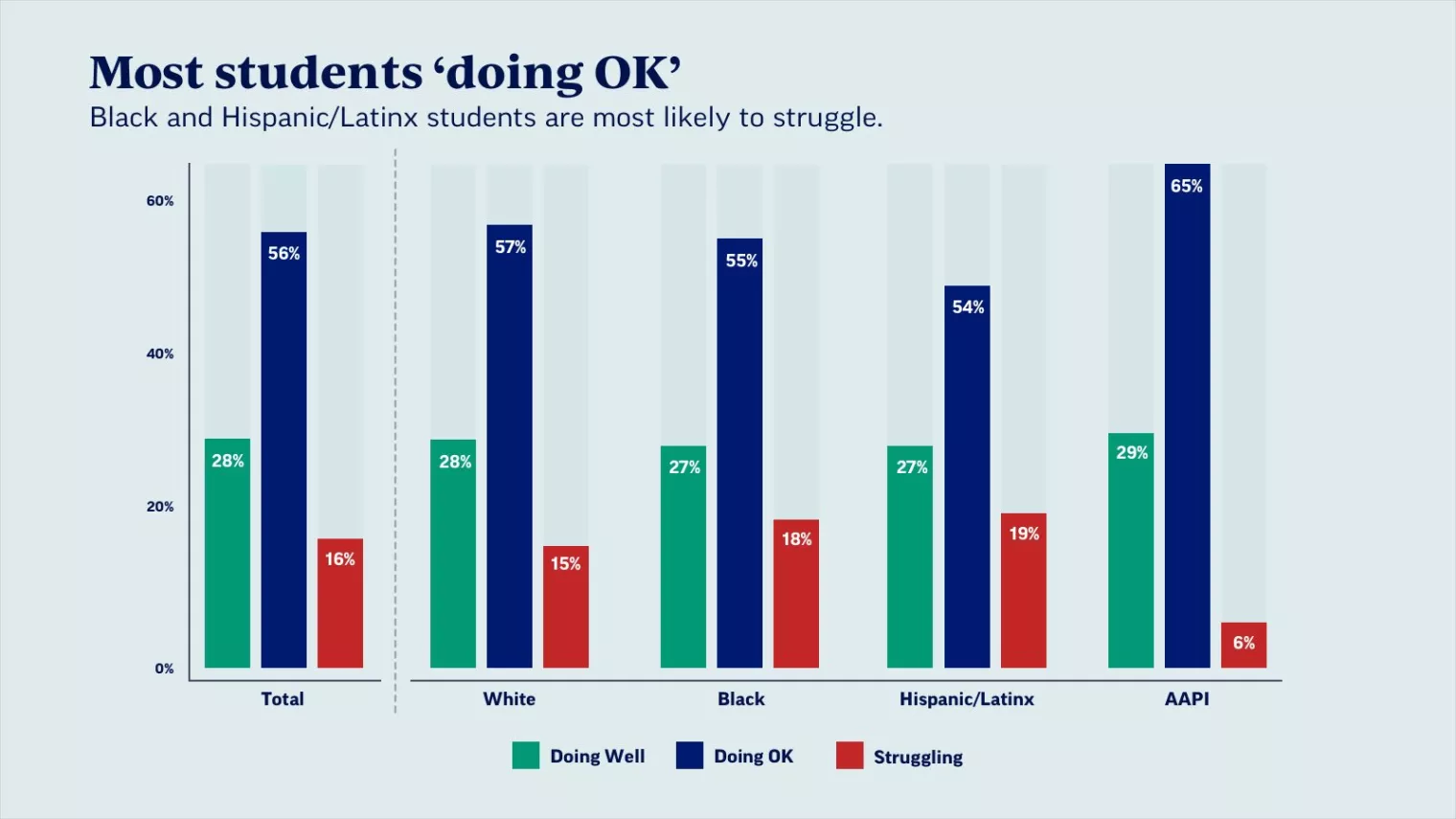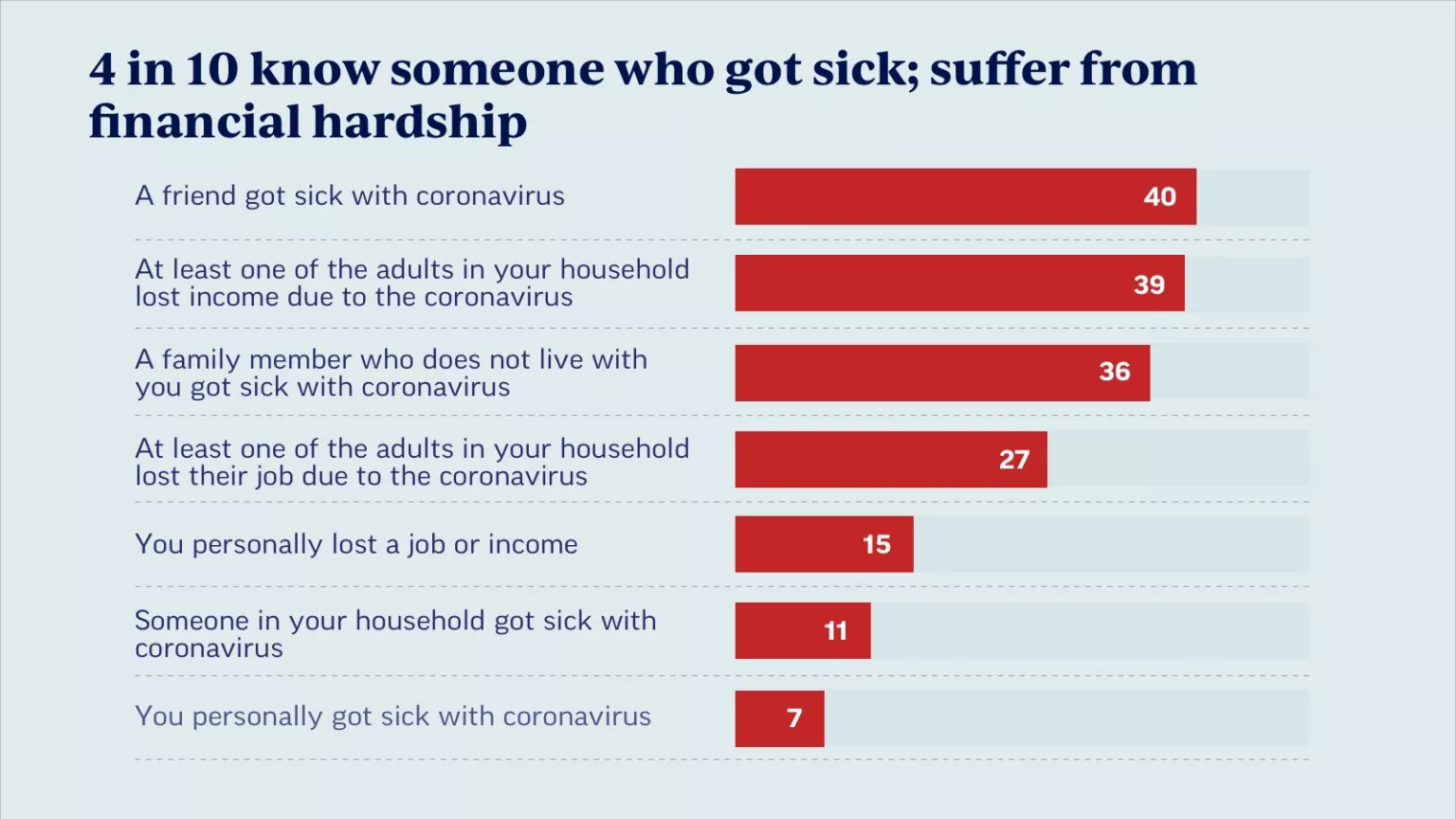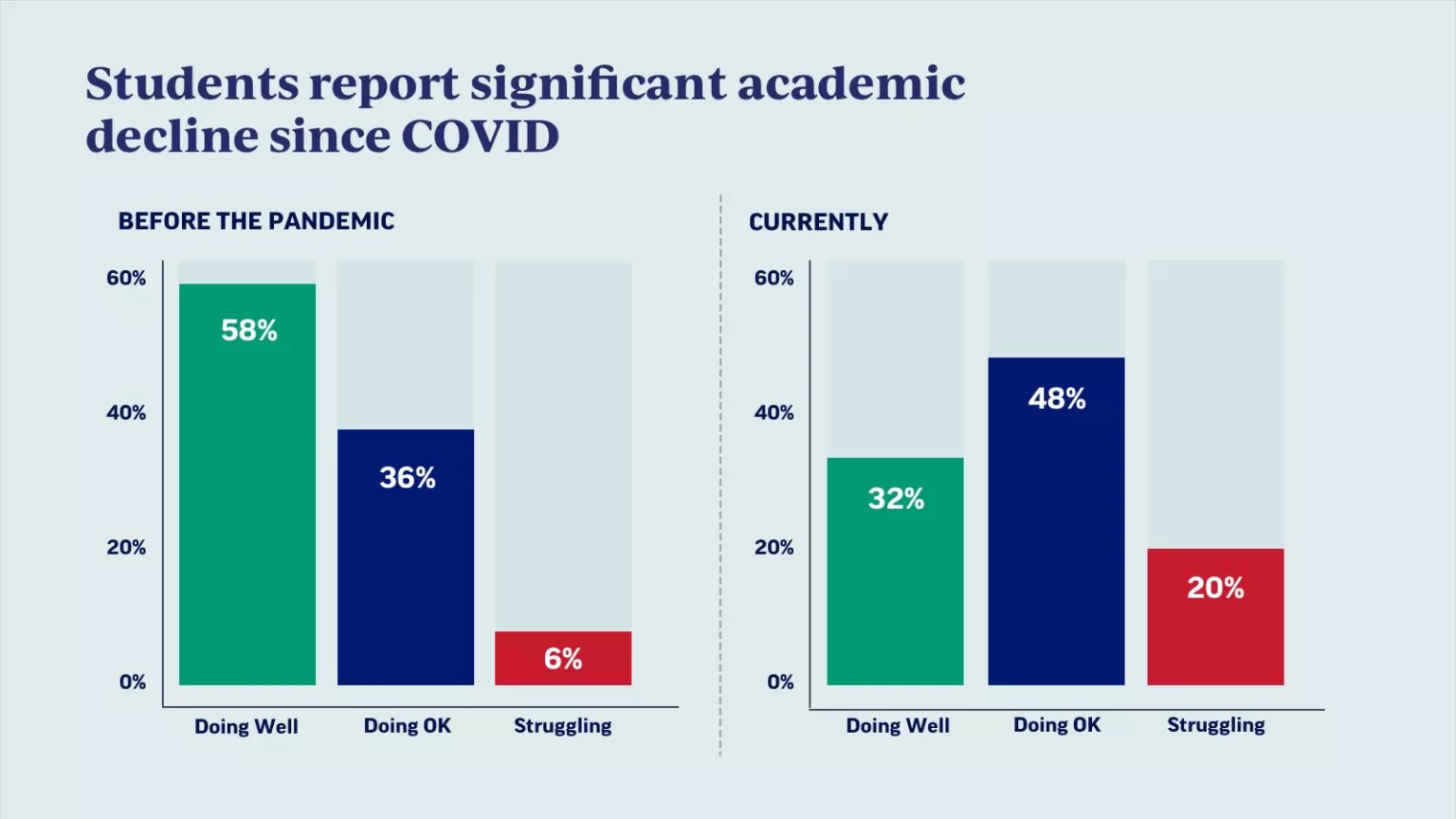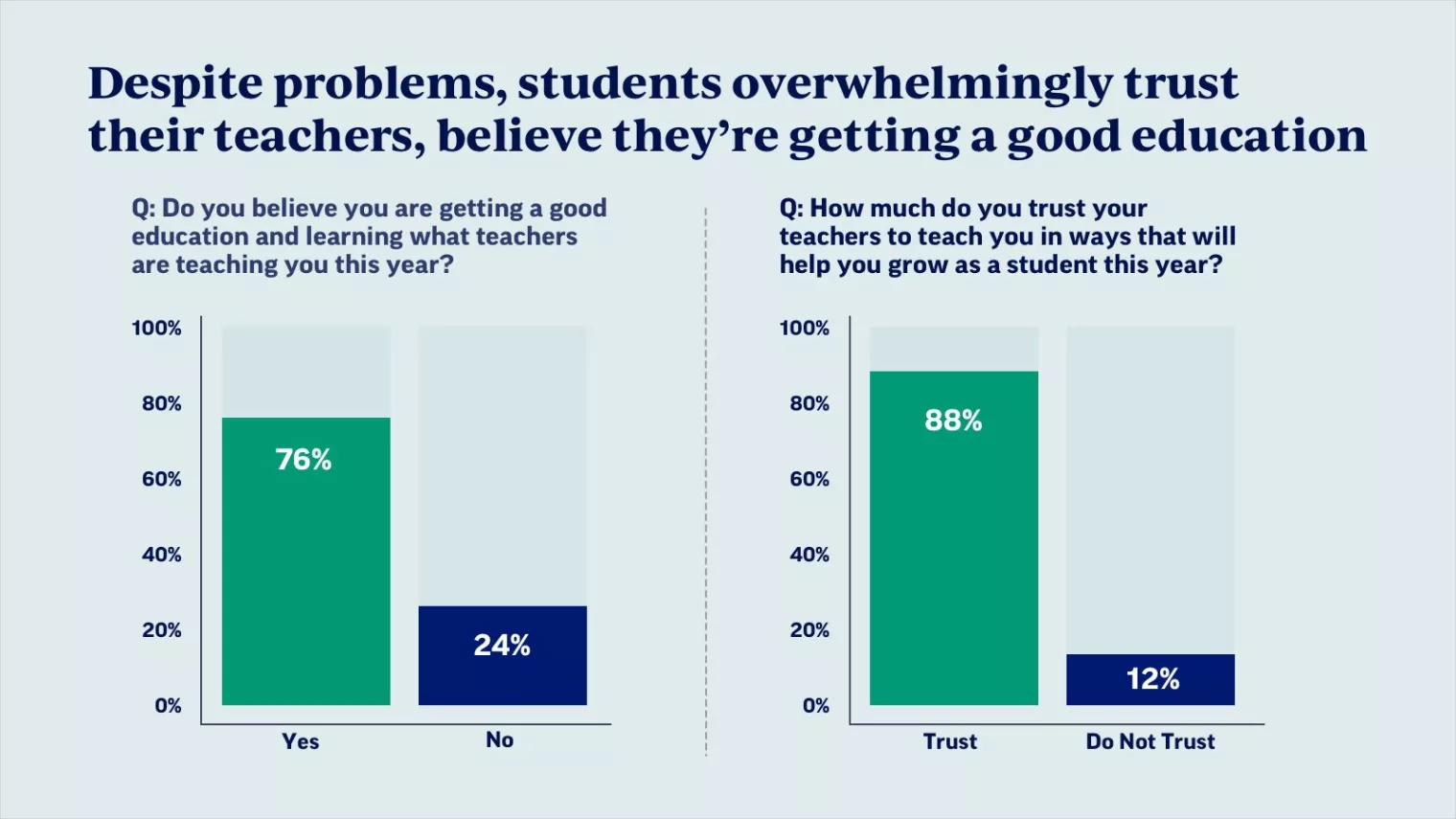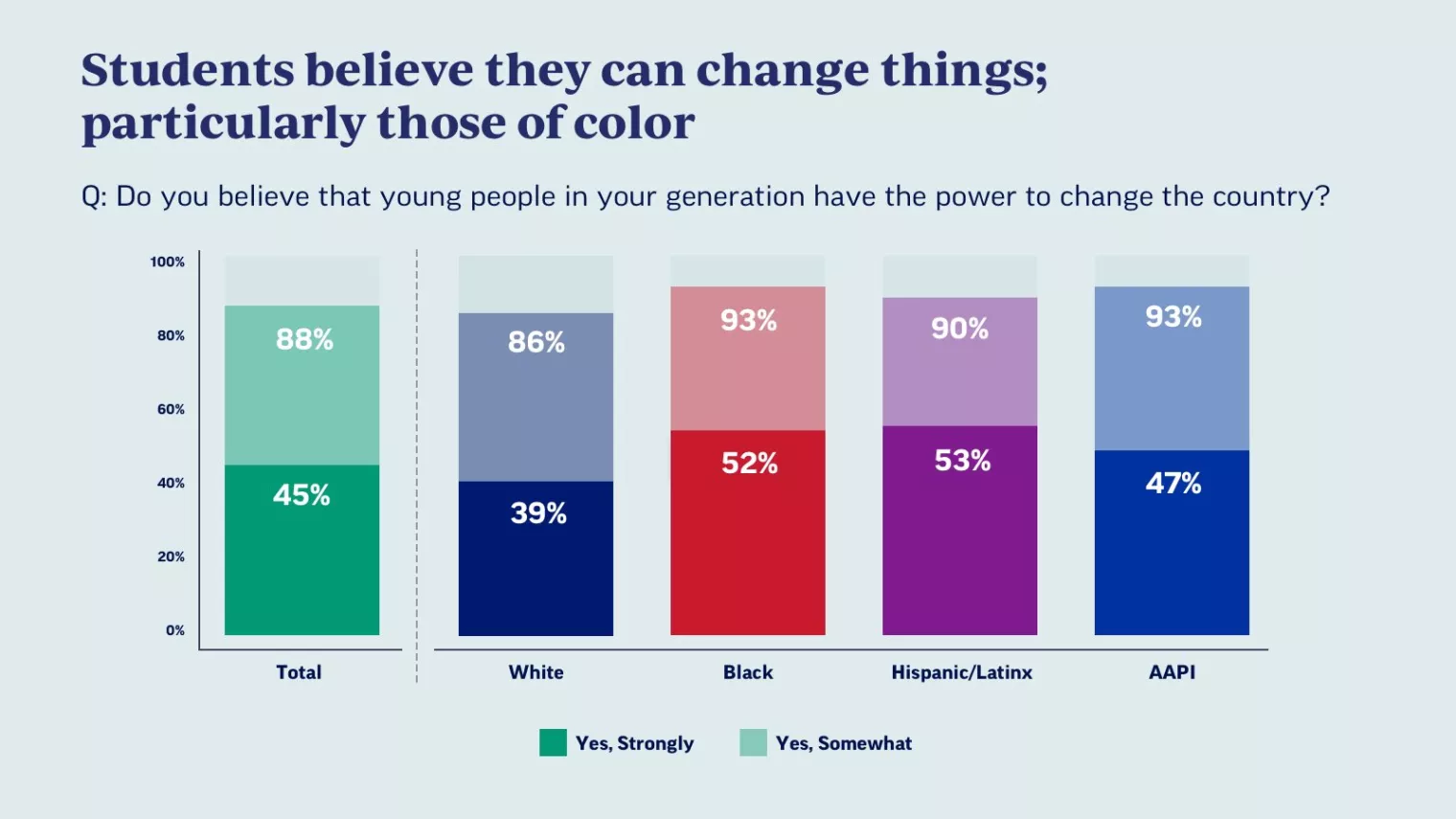Of the students polled, only 38% report that they prefer full-time, in-person learning at this moment, and another 27% report they prefer some hybrid of online and in-person learning. Students in online classes full-time are less eager to return to in-person instruction in the current environment, with only 28% preferring full-time, in-person instruction at this time. Given the choice, however, most students would prefer more in-person instruction.
Some students are thriving in the virtual environment, according to the research. They appreciate the ability to work more at their own pace and the freedom from social pressures.
“This generation of students should be an inspiration to all of us. National PTA is proud of our youth for their resiliency, making the most of their current situation, and believing in their power to change our nation,” said Leslie Boggs, president of National PTA. “These students are our future leaders, and as underscored by the results of the poll, this next phase of ‘returning to school’ is an important chance to ensure every one of them has every opportunity to reach their fullest potential regardless of their ZIP code.”
Although most students report they are “doing OK” and believe they are getting a good education, they reported wanting more interaction with their teachers — 65% say more interaction with teachers would be very helpful. Students also say additional tutoring to help them catch up and stay on track as well as more one-on-one time with their teachers would be very helpful, too.
In response to the findings of the poll, to better support students’ success, and to ensure that all students have equitable access to learning during the pandemic, National PTA and NEA recommend that education stakeholders and local, state and federal policymakers:
-
Provide students with additional instructional and social-emotional learning supports while school districts are in a full-time, virtual or hybrid teaching and learning model because no matter the education model, all students have suffered due to the pandemic and economic crisis.
Whenever possible and through collective action, these supports include:
-
Tutoring by educators (including education support professionals and other staff trained to support student learning outcomes identified by educators).
-
Providing more 1:1 access to educators (through programs such as “office hours” with teachers, paraprofessionals, school counselors and school social workers).
-
Building consistent routines and a sense of community for students that foster a sense of safety; resources and supports for student wellness and self-care; and supports for educators in providing social-emotional learning needs and trauma-informed instruction.
-
Ensuring access to supports for early learners, such as NEA’s partnership with WETA, which provides resources for reading and other materials that build and maintain strong school readiness.
Additionally, we recommend education stakeholders and local, state and federal policymakers:
- Ensure equitable digital access for all students and educators, including sufficient broadband access and appropriate devices, like laptops and tablets, with supports to learn how to use the platforms provided by schools and districts.
-
Ensure high standards continue to be met, while adjusting the kinds of assignments and tasks required of students to ensure prioritization of essential elements of the coursework and accounting for differences inherent in remote or hybrid instruction.
-
Utilize community school and other proven strategies to implement a robust family engagement plan in every school to support interactions between educators, students and families particularly during hybrid or virtual learning, raising awareness of the value of such interactions in student progress, safety and well-being.
Last month, National PTA and NEA joined other education organizations in continuing to call for more immediate resources to implement strong mitigation strategies for K-12 public schools so they can safely and equitably reopen buildings and stay open for in-person instruction, meet the growing academic and social-emotional needs of students, and address the challenges they are facing during the pandemic.
View the Press Conference
WASHINGTON — National PTA and the National Education Association today released the results of a national poll exploring students’ experiences during the COVID-19 pandemic. The poll, which surveyed more than 1,300 students aged 13–18, was conducted through Greenberg Quinlan Rosner Research. The findings show that while this generation of students faces unprecedented challenges, they have proven resilient. The findings also reveal that although they face academic challenges, students believe their teachers are doing the best they can under extremely difficult circumstances, and they trust their educators to help them grow this year.
Key findings revealed that:
- 56% of students describe themselves and their family as “doing OK” when it comes to handling the pandemic. Only 16% of students report they are struggling. These numbers remain consistent along different racial groups.
- Four in 10 students report significant economic stress in their family, and as many have had a family member contract the virus. Students complain of boredom, possibly brought on by social isolation and a lack of social interaction. At the same time, some students report that they have used the pandemic to reconnect with their families, take on hobbies, exercise and even reconsider career goals.
- 58% of students say they were doing well academically before the virus; only 32% believe they are doing well currently. The self-reported academic decline remains consistent along different racial subgroups, and there is relatively little difference between students learning in-person, in hybrid mode and fully online. Younger students and students whose parents did not attend college as well as students in hybrid situations, however, are the most likely to report an academic decline.
- 88% of students say they trust their teachers to teach them this year, and 76% believe they are getting a good education, despite the recognition that their teachers lack resources and time.
“I see educators across the nation finding new and innovative ways to reach students and communities during these extremely challenging and uncertain times — even when Congress fails to give them the tools and resources they need to succeed,” said NEA President Becky Pringle. “It’s not surprising that nearly 90 percent of students trust their teachers to teach them this year. But the pandemic is hurting our Black, Latino and Native students disproportionally, and we need to demand that all students — no matter where they’re from or where they live — have the supports they need to strive coming out of this national public health and economic crisis.”
Key Findings
Media Contact
- Cristen Haddad
- [email protected]
